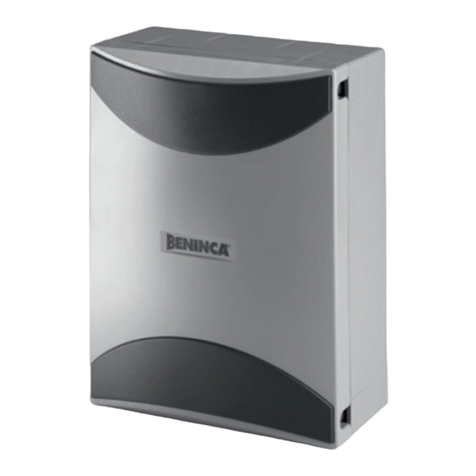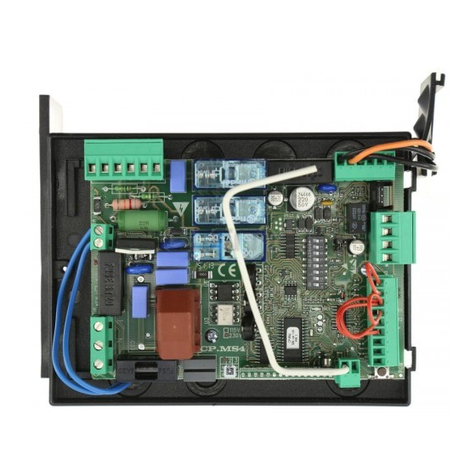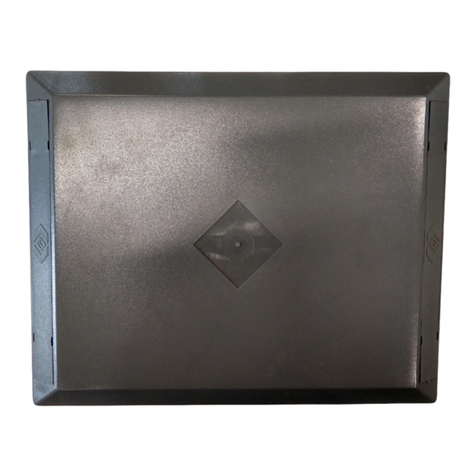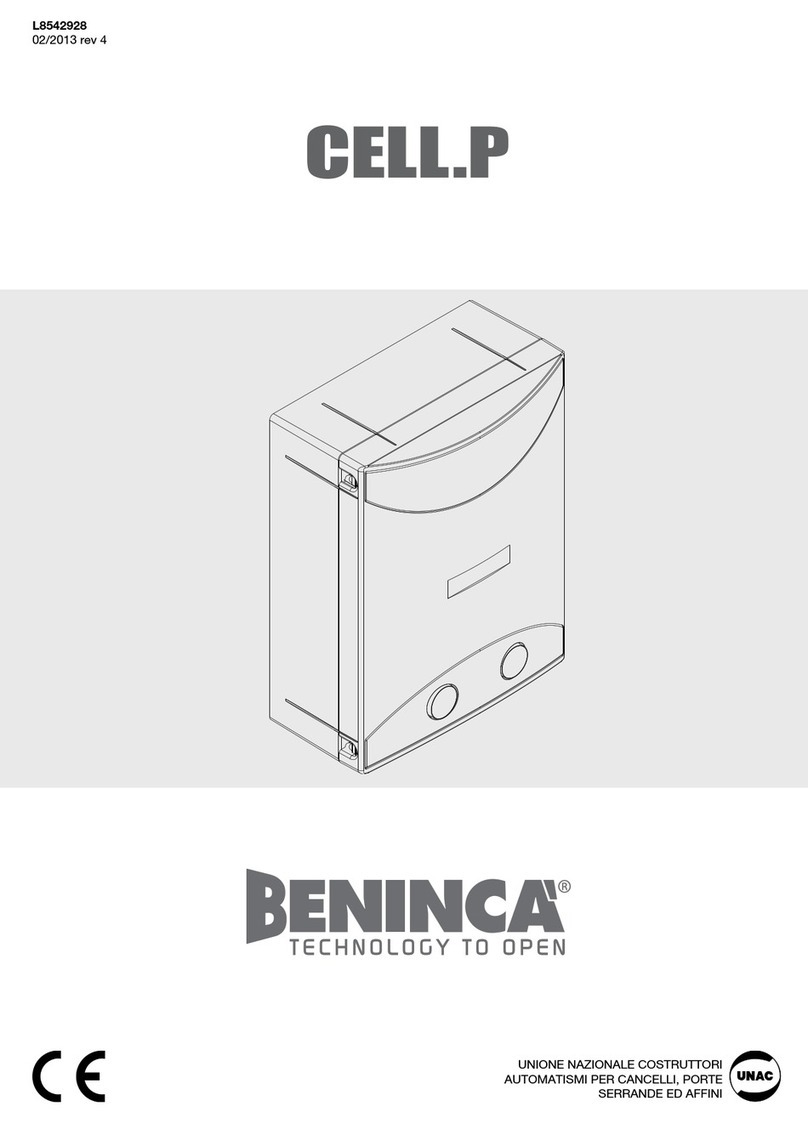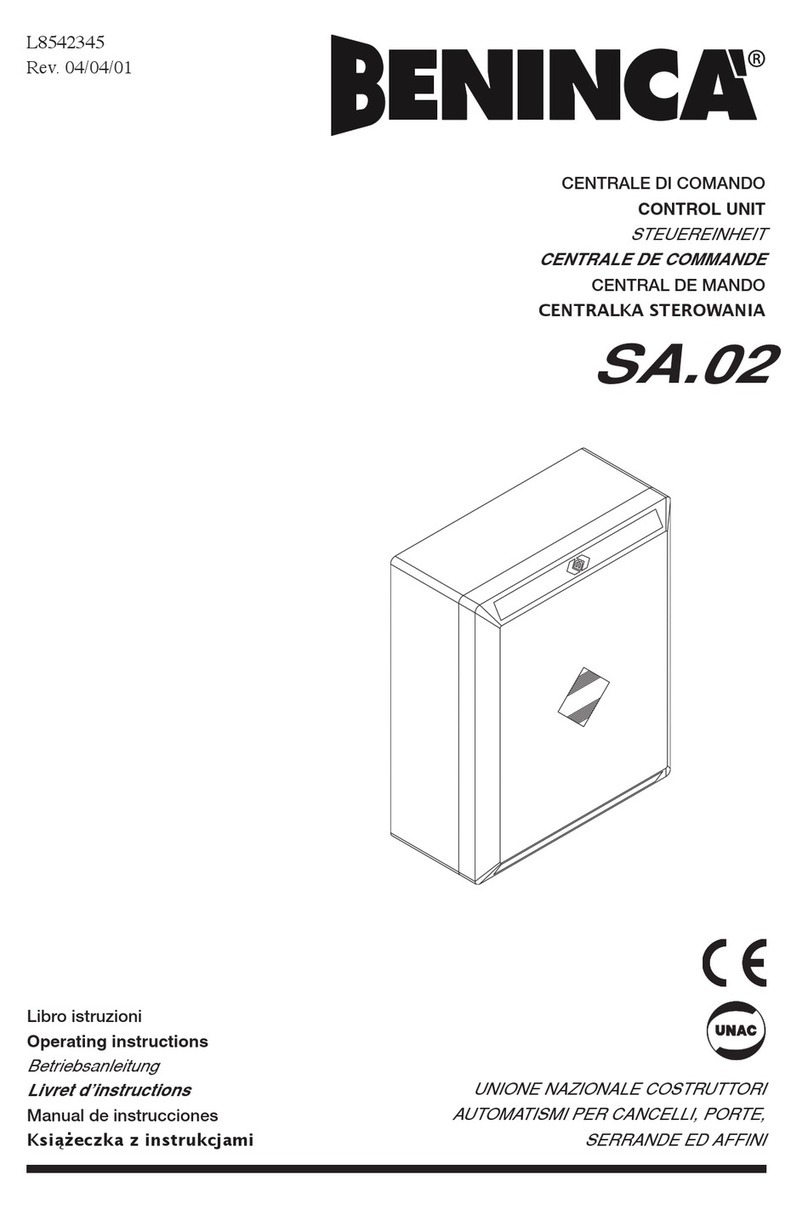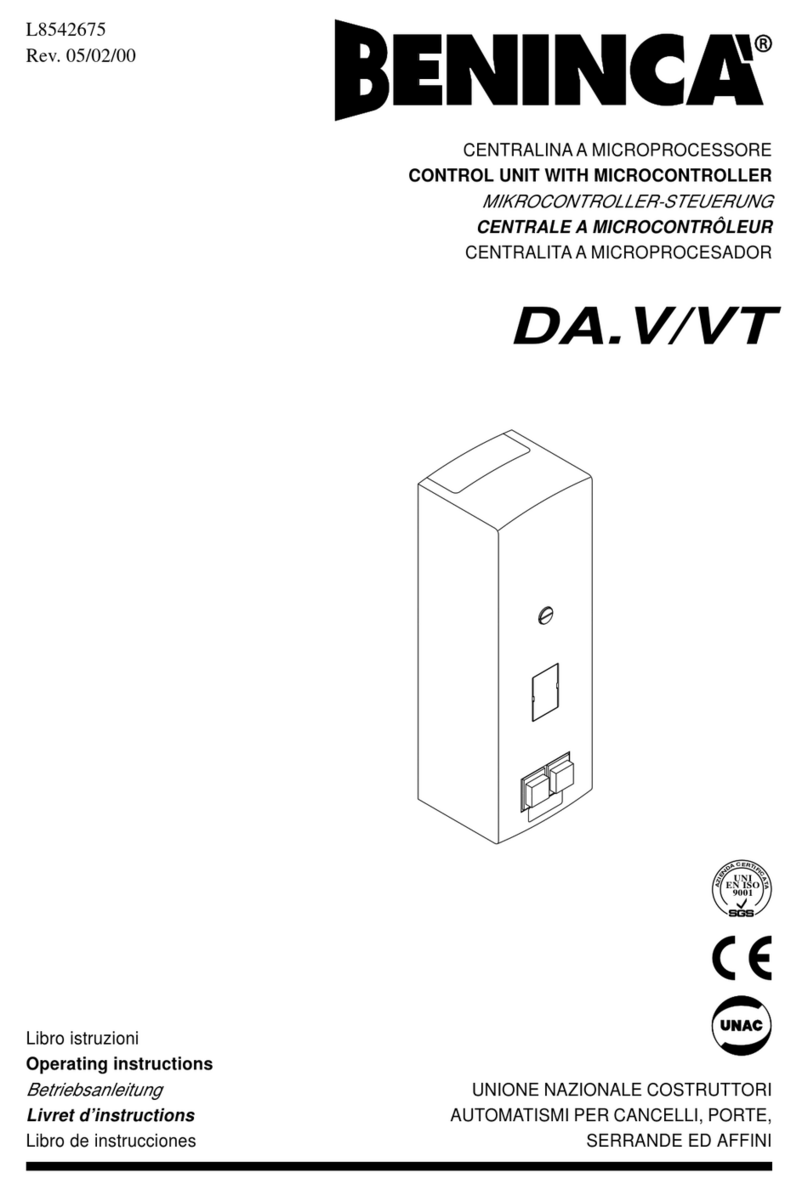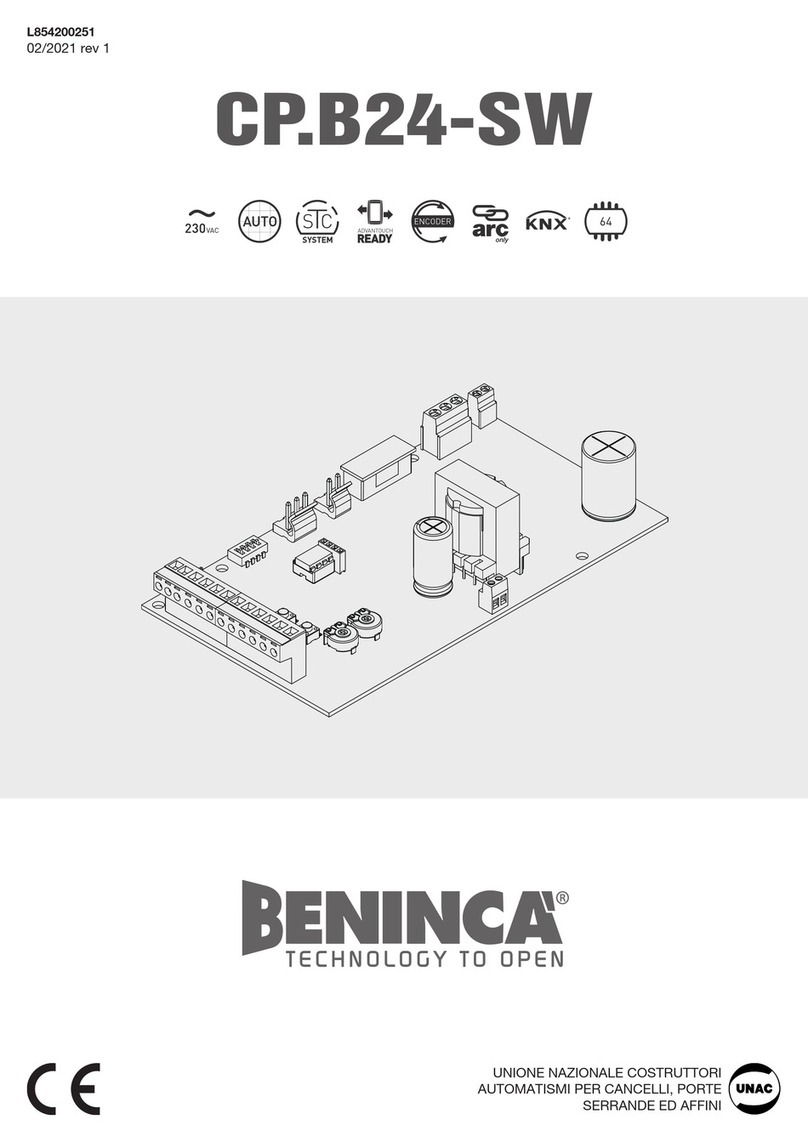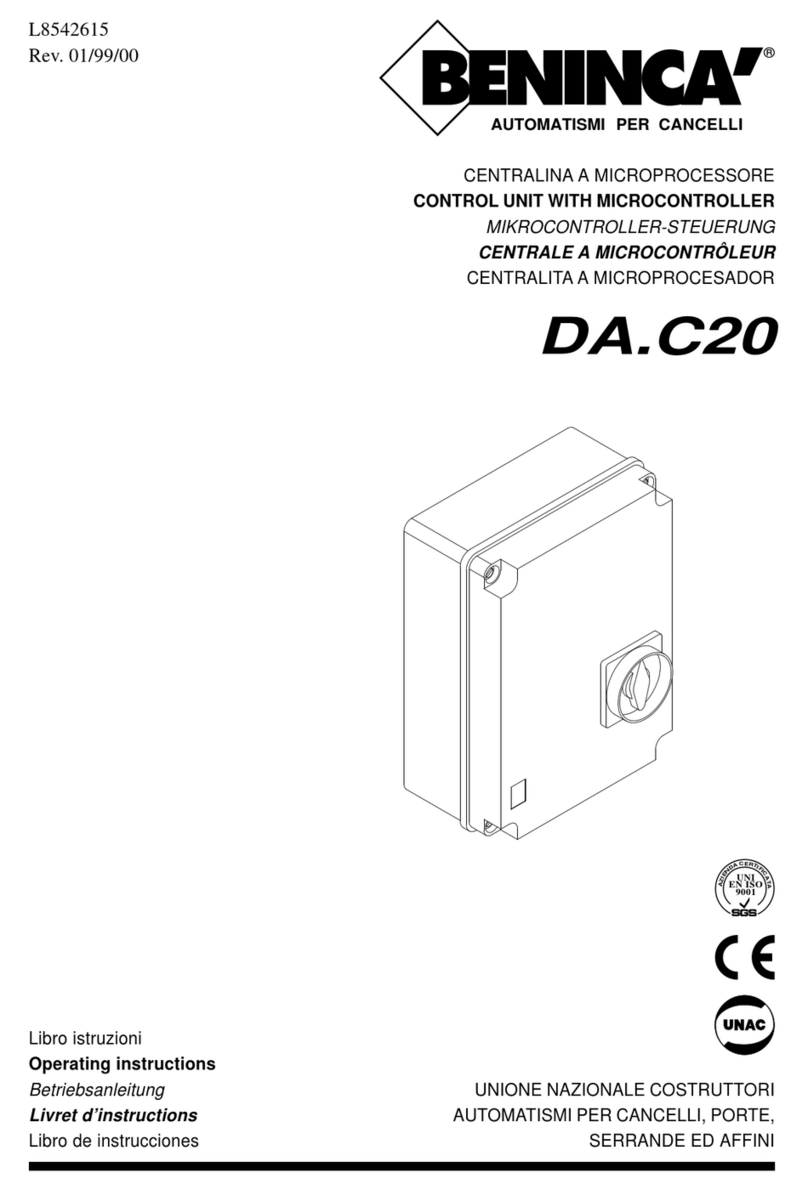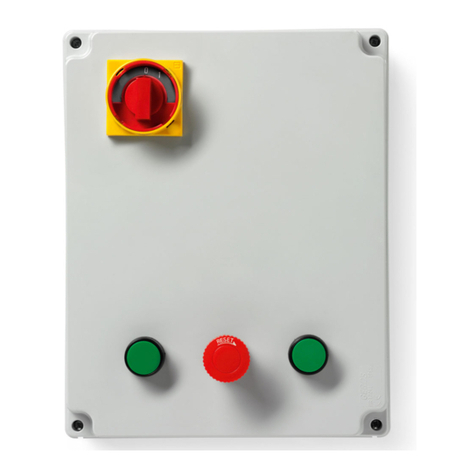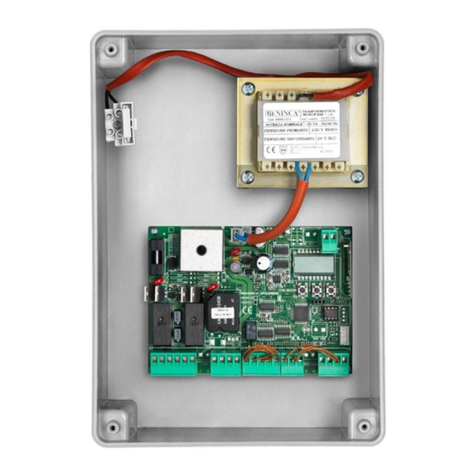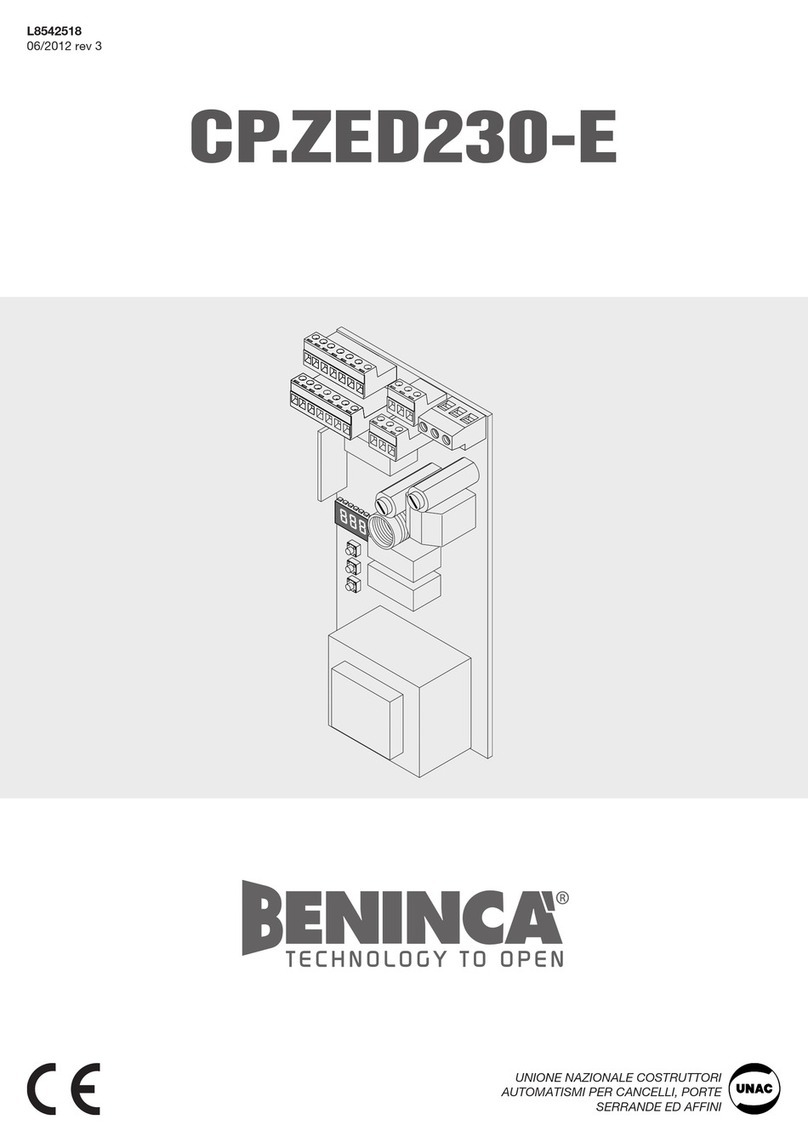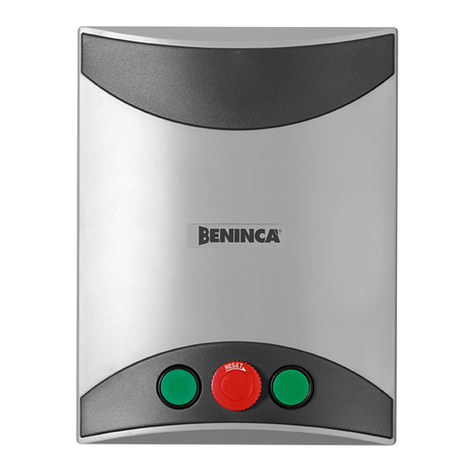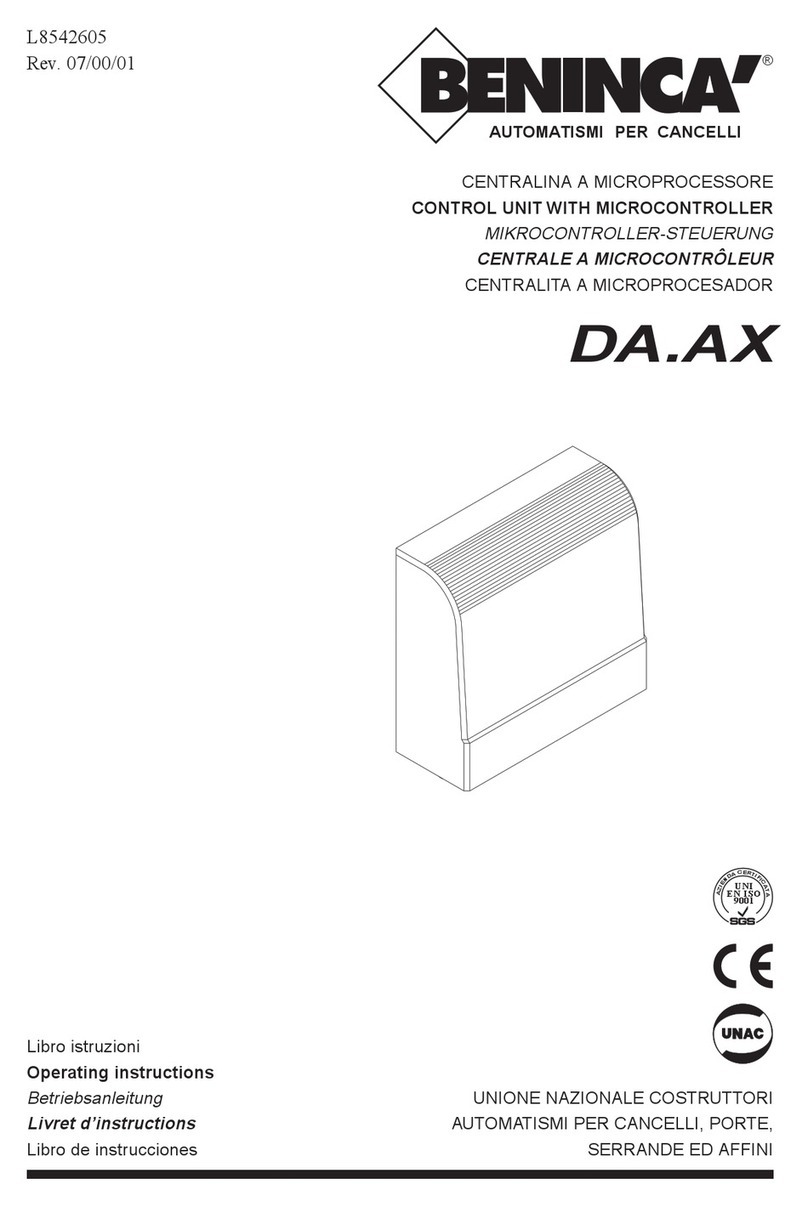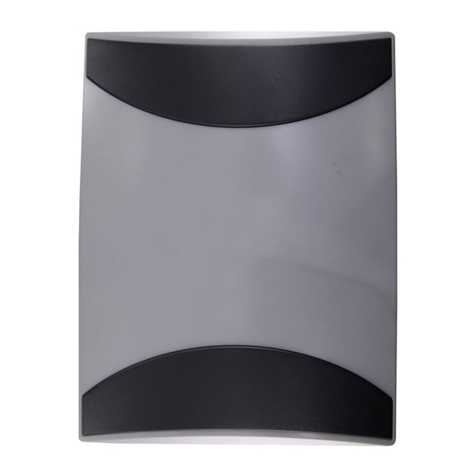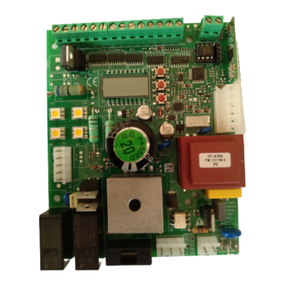
4
Centrale per RI.624
La centrale a microcontrollore “Ri.624” può essere usata per comandare motori a 24Vdc di potenza non superiore a 160W.
Ingressi/Uscite
N° Morsetti Funzione Descrizione
1 Comune finecorsa Morsetto comune per gli ingressi FCA e FCC (vedi “Installazione della centrale”).
2,3 Uscita +V Morsetto comune per tutti gli ingressi.
4 Ingresso CHIUDE Contatto N.O.
5 Ingresso APRE Contatto N.O. (Commutabile a ingresso “Pedonale”).
6 Ingresso P.P. Ingresso Passo-Passo. Collegato in parallelo all’uscita del radiocomando. Contatto N.O.
7 Ingresso STOP Contatto N.C.
8 Ingresso FCC Ingresso finecorsa di chiusura. Contatto N.C.
9 Ingresso FCA Ingresso finecorsa di apertura. Contatto N.C.
10 Ingresso FTC Da collegare al contatto di uscita della fotocellula. Contatto N.C.
11,12 Ingresso ASC Ingresso per costa o dispositivo di sicurezza il cui intervento provoca l’inversione di marcia per 1 secondo
se il motore è in fase di chiusura*.
12,13 Ingresso ASA Ingresso per costa o dispositivo di sicurezza il cui intervento provoca l’inversione di marcia per 1 secondo
se il motore è in fase di apertura*.
14,15 Uscita 24Vdc Uscita alimentazione ausiliaria 24Vdc. “-“ = mors. 14, “+” = mors. 15
16,17,18 Ingresso Batteria Collegamento per batteria tampone (2x12V): mors. 16= 24V, mors. 17= 12V , mors. 18= 0V e cavo giallo-
verde di Terra dell’impianto elettrico.
19,20 Uscita LAMP Al lampeggiante. Lampada 24V - 10W max.
20,21 Uscita SCA Alla “Spia Cancello Aperto”. Lampada 24V - 3W max.
22,23 Uscita Motore Al motore 24Vdc.
24,25 Ingresso secondario Al secondario del trasformatore 24Vac.
26,27 Ingresso primario Al primario del trasformatore 230Vac.
28,29 Ingresso 230Vac Alimentazione centrale 220Vac - 50Hz, Neutro= mors. 28, Fase= mors. 29.
32,33 Uscita 2° canale Contatto N.O. comandato dal secondo canale del radiocomando.
34,35 Ingresso Antenna Collegamento antenna per scheda ricevente del radiocomando. Schermo= mors. 34
RIC1 Connettore scheda ricevente del radiocomando
* L’ingresso della costa è un ingresso a resistenza calibrata.
Se si usa una costa resistiva Chiudere il rispettivo Ponticello: J1 per ASC e J2 per ASA.
Se si usa una costa meccanica Aprire il rispettivo Ponticello: J1 per ASC e J2 per ASA.
Se non si desidera montare una costa, Aprire il relativo Ponticello e posizionare su ON il DSW di cortocircuito. 5-ASC, 6-ASA.
N.B.: Per la costa ci sono due ingressi dedicati, NON COLLEGARE MAI LA COSTA AL MORSETTO COMUNE
Led
+5V Alimentazione dei circuiti di controllo. Se il led è spento, controllare il fusibile F1 (2A).
+24V Alimentazione del motore. Se il led è spento, controllare il fusibile F3 (10A).
PROG. Lampeggiante durante il funzionamento normale della centrale.
CH Segnala che il motore è in fase di chiusura.
AP Segnala che il motore è in fase di apertura.
Trimmer
PA Regola la soglia del limitatore di coppia del motore durante la fase di apertura (soglia massima= senso orario).
PC Regola la soglia del limitatore di coppia del motore durante la fase di chiusura (soglia massima= senso orario).
Installazione della centrale
1 Dopo aver valutato le caratteristiche e i rischi dell’impianto, escludere tutti gli ingressi normalmente chiusi che non si desidera utilizzare: Stop (7),
FCC (8), FCA (9), FTC (10), ASC (11), ASA (13), utilizzando i 6 dip-switch vicini alla morsettiera estraibile.
Le corrispondenze sono: 1= Stop, 2= FCC , 3= FCA, 4= FTC, 5= ASC, 6= ASA.
N.B.: Tra i morsetti Com.Fc (1) e Com. (2) è collegato un microinterrutore che fa eseguire la taratura della corsa quando viene azionato lo sblocco
manuale del motore, se si montano i finecorsa il Comune dei finecorsa va collegato al morsetto Com.Fc (1) assieme ad uno dei cavi del microinter-
rutore di sblocco (l’altro cavo del microinterrutore di sblocco resta collegato al morsetto Com. (2) assieme ad eventuali altri comuni dei pulsanti.
Se la costa sensibile è montata sul bordo di chiusura o di apertura, le connessioni dovrebbero essere portate agli ingressi “ASC” e “ASA” rispettivamente.
Collegare il morsetto “0V” (18) al cavo giallo-verde di terra dell’impianto elettrico.
2 Collegare gli ingressi di comando: P.P. (6) ,Apre (5), Chiude (4).
3 Collegare l’alimentazione 24Vdc (14,15) ad eventuali dispositivi collegati alla centrale (fotocellule, ricevitori,…) rispettando la corretta polarità. Col-
legare il lampeggiante e l’eventuale “spia cancello aperto” (lampade 24V-3W).
4 Dopo aver ricontrollato i collegamenti, alimentare la centrale ai morsetti di ingresso 230Vac (28,29). All’accensione dovrebbero essere accesi i led
+5V, +24V, STOP, FTC. Almeno uno dei led FCA o FCC deve essere acceso. Il led PROG deve lampeggiare.
5 La prima manovra della centrale è eseguita a velocità ridotta per ricavare la corsa del cancello.
• Regolare i trimmer PA e PC a metà.
• Dare un comando di apertura (Apre, P.P., radiocomando).
• La centrale esegue il prelampeggio e quindi inizia la fase di apertura. Il cancello si ferma tutto aperto per blocco meccanico o sul FCA se questo
è montato.
Il lampeggiante non si spegne e dopo 3 secondi inizia automaticamente la chiusura. La taratura termina alla fine della manovra di chiusura, cioè
sul blocco meccanico di chiusura o sul FCC se questo è montato. La procedura non termina se il motore viene fermato da un comando ( PP,
Stop, fotocellula, …). Dopo la taratura della corsa, è necessario eseguire la regolazione dei trimmer PA e PC, che consentono di limitare la potenza

